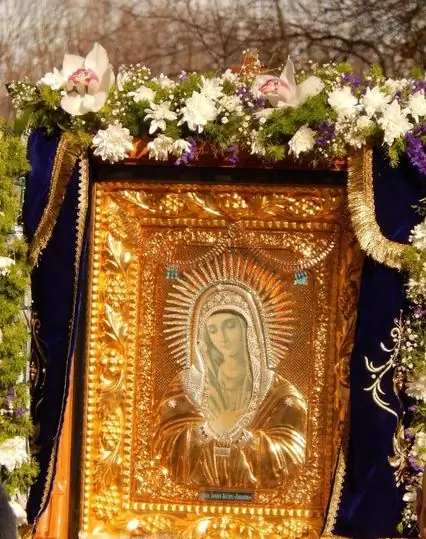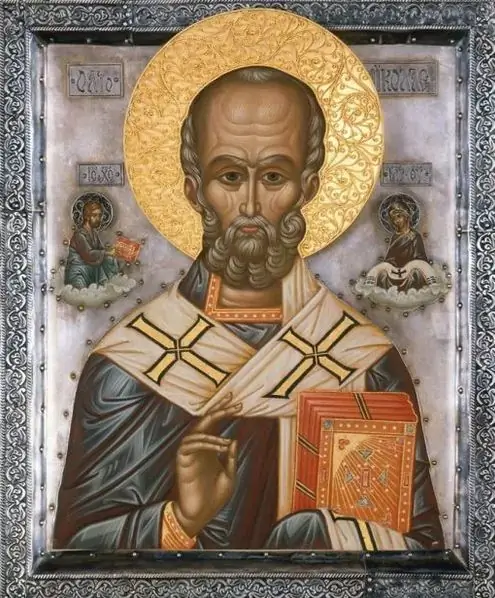- Author Antonio Harrison [email protected].
- Public 2023-12-16 07:44.
- Last modified 2025-01-22 21:44.
At all times, the most irreconcilable differences between atheists and believers arose, oddly enough, because of the attitude towards miracles. The first exclaimed: “Vraki, this cannot be. This is contrary to the laws of physics! " The second were indignant: “You are atheists, unbelievers, there is no cross on you. It's a miracle …"

At the turn of the 20th and 21st centuries, there were so many reports of miracles that in November 2004, with the blessing of the church, a special expert working group was created. The scientists included in it - physicists, chemists, biologists and paleontologists -, after numerous studies, ascertained: in the Russian Orthodox Church there really is a fact of the myrrh streaming of icons and their acquisition by churches, miraculous self-renewal of holy images takes place. All these cases were studied in the best forensic laboratories of the Ministry of Internal Affairs. The most "studied" miracle was the myrrh-streaming of icons.
Myrrh-streaming icon
In 1994, a miracle happened in the house of the Remizovs from the village of Lokot, Bryansk Region. It all started with Natalia Remizova's trip to Children's World. During that critical era, people learned to survive. People scurried from one empty store to another, hoping to get at least something. Natalya suddenly saw a bright sun glare through the gray dull crowd. On the wall of the store there was an Orthodox calendar with the image of the Seraphim-Diveyevo Icon of the Most Holy Theotokos "Tenderness". It was last year's, no longer needed by anyone. Natalia bought it, cut out the icon and hung it on the wall. In 1999, during her illness, Natalya read the psalter and suddenly felt an amazing fragrance. The whole room was filled with the aromas of honey, dew, outlandish flowers and herbs. The smell came from the icon hanging on the wall, the one cut from a regular calendar.

Natalya Nikolaevna and her husband decided to make a frame for the icon, but they were shocked when they saw the face of the Virgin on the reverse side. The couple invited an Orthodox priest, read the akathist, and the icon began to stream myrrh. The fragrance was released so abundantly that researchers were able to collect it in a medical tray.
The laboratory of the Moscow State University stated that the chemical composition of the released substance is vegetable oil. But how it in itself, before the eyes of eyewitnesses, comes from the Orthodox calendar, no one knows. Why does it suddenly appear on icons and on the faces of worshipers in churches? Scientists have no answers to these questions. Perhaps that is why almost all seriously ill people in the village of Lokot were healed. They came to Natalya's house with a variety of ailments, and left healthy, as evidenced by the test results they provided.
Rescued icon
At the beginning of the 20th century, during the period of persecution against the church, the icons were streaming, bleeding and miraculously renewed. The so-called wave of renewal began from the territory of Ukraine and Belarus, and soon covered all the southern provinces of Russia. Skeptics tried to find an explanation for this by simple focusing of vision - they say, if you look at the icon for a long time and without interruption, then it will not be so imagined. But what about the blackened, charred icon, which suddenly shone with all the colors?
Kizil miracle
This miracle happened at the Kizilsky convent in the Chelyabinsk region. A film was made about this in 2011 by the Orthodox journalist Igor Kalugin. The icon of St. Nicholas the Wonderworker, acquired by the holy abode several years earlier, has been miraculously renewed.

According to legend, before the revolution, a young pilgrim Xenophon went to the holy places from the village of Eriyuvka. For a whole year he walked to Jerusalem. There he prayed fervently at the Holy Sepulcher and returned back with the icon of St. Nicholas the Wonderworker. He bequeathed to his children to pass on the icon from generation to generation. She first went to his daughter Olga. She recalled how she hid her from the Komsomol members who arrived in the village to fight religious remnants. The woman saved her icon so that one day she would save her children.
Procession
Olga's son Nikolenka was a schoolboy, the eldest daughter barely began to walk, the youngest was just born. The children were left alone for a while, and a fire broke out in the stove-heated house. The icon was kept in a pantry, where the children, by a lucky chance, hid. The smoke was enormous, but the kids weren't hurt! Only the icon turned into a blackened board.
Years passed … Nicholas grew up and gave the icon to the church. It was kept in the altar for a long time, and on May 22, 2004, Father Andrey carried it in a procession around the monastery. On the same day, during the service, parishioners heard the crackling of candles and noticed a flicker emanating from the icon. And then the incredible happened. In front of everyone's eyes, the strip at the level of the face of the saint cleared itself, and everyone saw the face of Jesus Christ to the right of Nicholas the Wonderworker, and to the left of the Most Holy Theotokos. From that day on, the icon was renewed regularly and in stages - from top to bottom. It ended only in October 2006.






